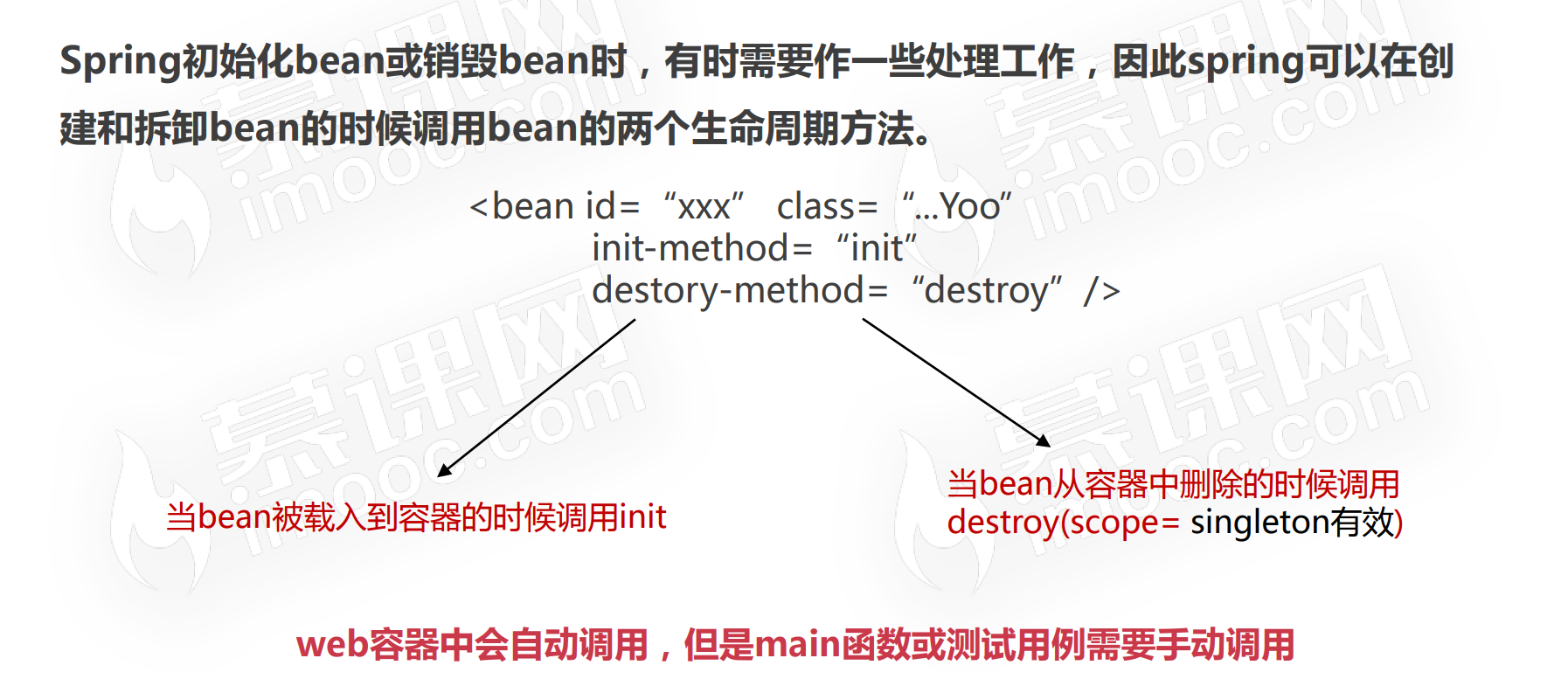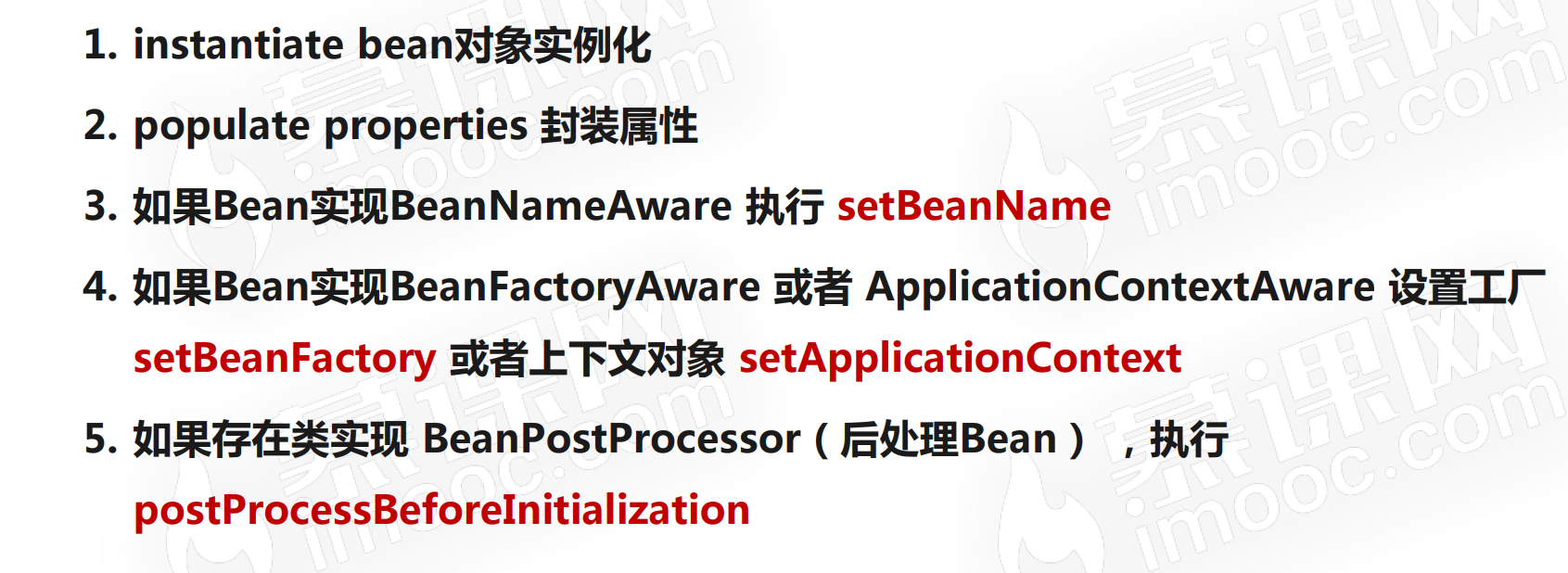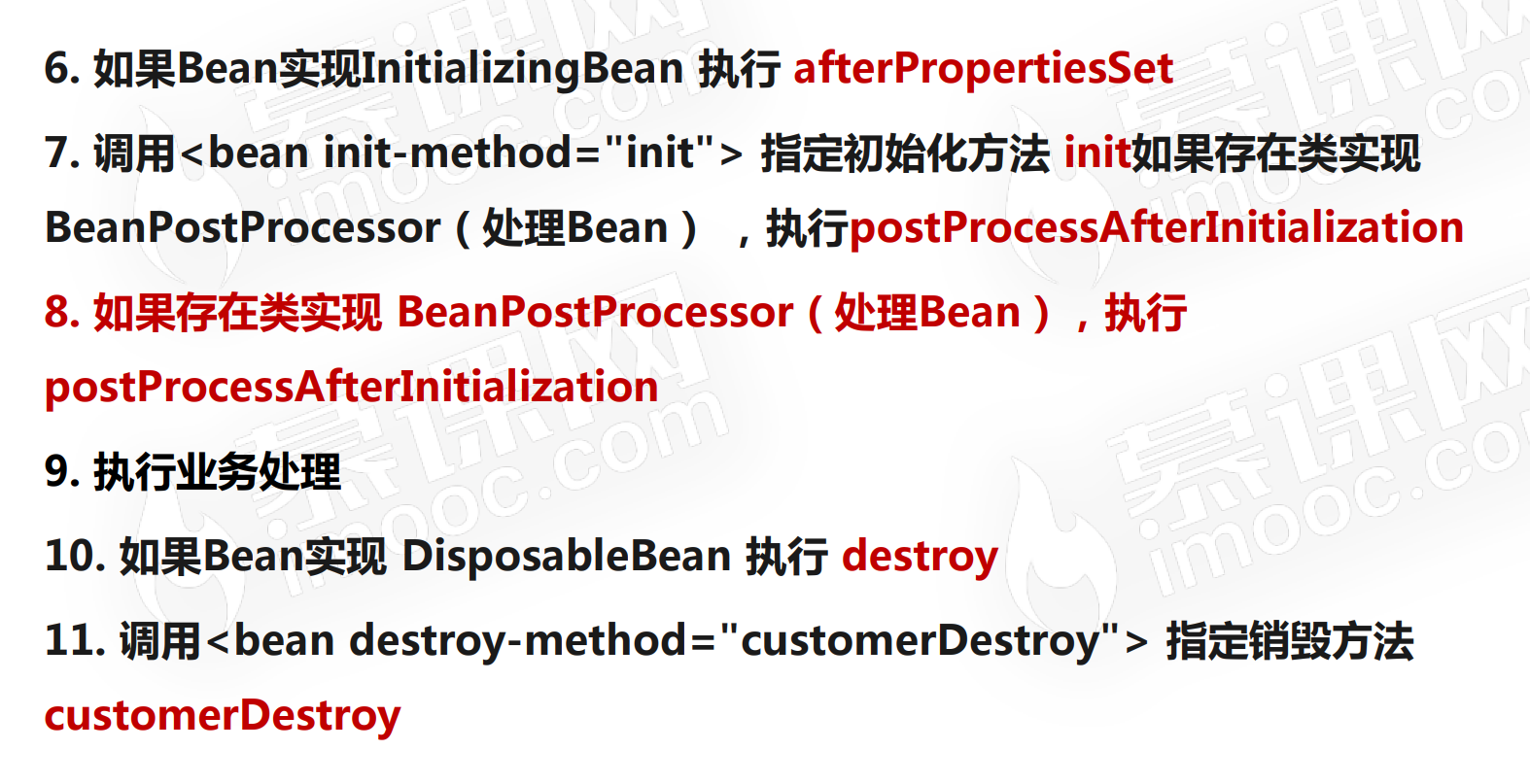1.有三种实例化方式(无参构造,静态工厂,实例工厂),最常用的还是无参构造的方式
2.bean标签中常用的属性
id/name:唯一标识名称,两者作用一样,只是name中可以包含特殊字符
class:类的完全路径名
scope:bean的作用域 singleton :单例 (默认) prototype:每getBean创建一个新的 (常用) request session (不常用)
一般都默认为singleton ,当整合struts2时,它的action是多例的,它要交给spring去管理,所以用多例
init-method:当bean被载入容器中时调用
destroy-method:当bean从容器中删除时调用 (scope=prototype时有效)
(init-method和destroy-method在web容器中会自动调用,但是main函数或测试用例需要手动调用)

3.bean的生命周期


package com.pheony.demo2; import org.springframework.beans.BeansException; import org.springframework.beans.factory.BeanNameAware; import org.springframework.beans.factory.DisposableBean; import org.springframework.beans.factory.InitializingBean; import org.springframework.context.ApplicationContext; import org.springframework.context.ApplicationContextAware; public class Food implements BeanNameAware,ApplicationContextAware,InitializingBean,DisposableBean { public Food(){ System.out.println("第一步,利用构造方法实例化啦"); } private String name; //食品名称 public void setName(String name) { System.out.println("第二步,设置属性啦"); this.name = name; } public String getName() { return name; } @Override public void setBeanName(String s) { System.out.println("第三步,设置bean的名称啦"); } @Override public void setApplicationContext(ApplicationContext applicationContext) throws BeansException { System.out.println("第四步,了解工厂信息啦"); } @Override public void afterPropertiesSet() throws Exception { System.out.println("第六步,属性设置后啦"); } public void setup(){ System.out.println("第七步,初始化啦"); } public void run(){ System.out.println("第九步,执行自身业务方法啦"); } @Override public void destroy() throws Exception { System.out.println("第十步,执行spring的销毁方法啦"); } public void setdown(){ System.out.println("第十一步,执行自身销毁方法啦"); } }
package com.pheony.demo2; import org.springframework.beans.BeansException; import org.springframework.beans.factory.config.BeanPostProcessor; /** * 后处理bean,很关键,AOP就是利用这个实现的 */ public class MyBeanPostProcessor implements BeanPostProcessor { @Override public Object postProcessBeforeInitialization(Object o, String s) throws BeansException { System.out.println("第五步,初始化前方法来啦"); return o; } @Override public Object postProcessAfterInitialization(Object o, String s) throws BeansException { System.out.println("第八步,初始化后方法来啦"); return o; } }
<bean id="food" class="com.pheony.demo2.Food" scope="singleton" init-method="setup" destroy-method="setdown"> <!--在实体类中属性最好都加上set/get方法,DI根据set/get方法找到对应的属性--> <property name="name" value="香蕉"></property> </bean> <bean class="com.pheony.demo2.MyBeanPostProcessor"></bean>
package com.pheony.demo2; import org.junit.Test; import org.springframework.context.support.ClassPathXmlApplicationContext; public class TestFood { @Test public void test1(){ ClassPathXmlApplicationContext ac = new ClassPathXmlApplicationContext("applicationContext.xml"); Food food = (Food)ac.getBean("food"); food.run(); ac.close(); } }



